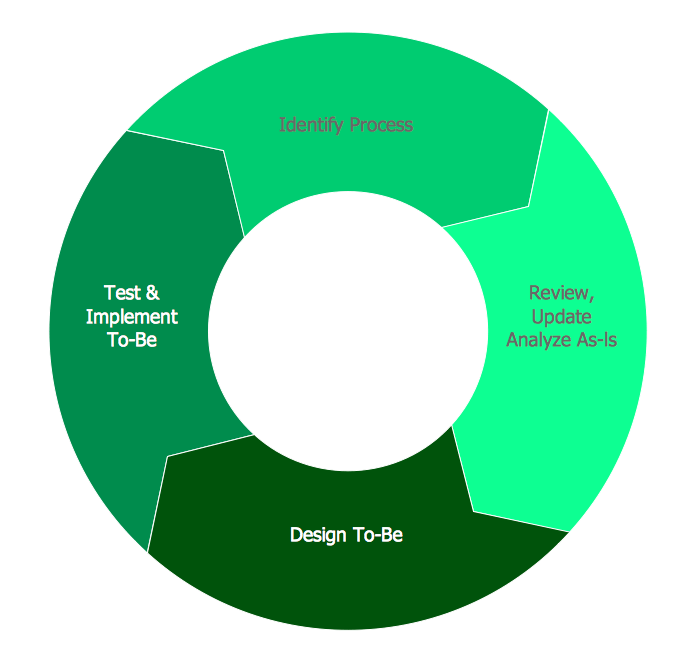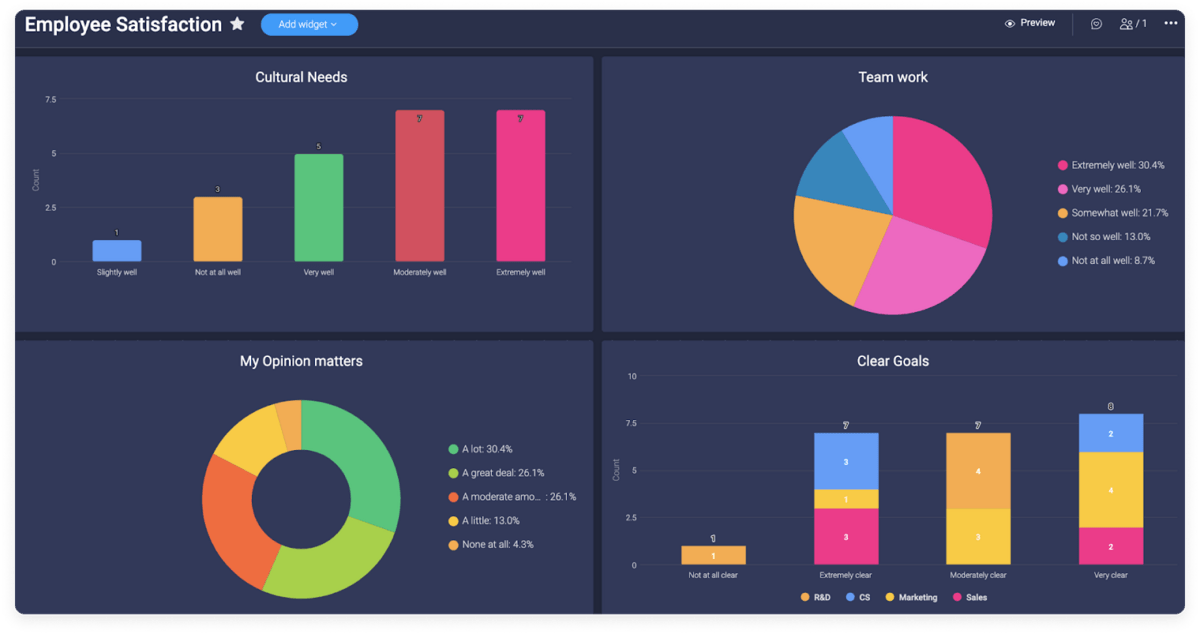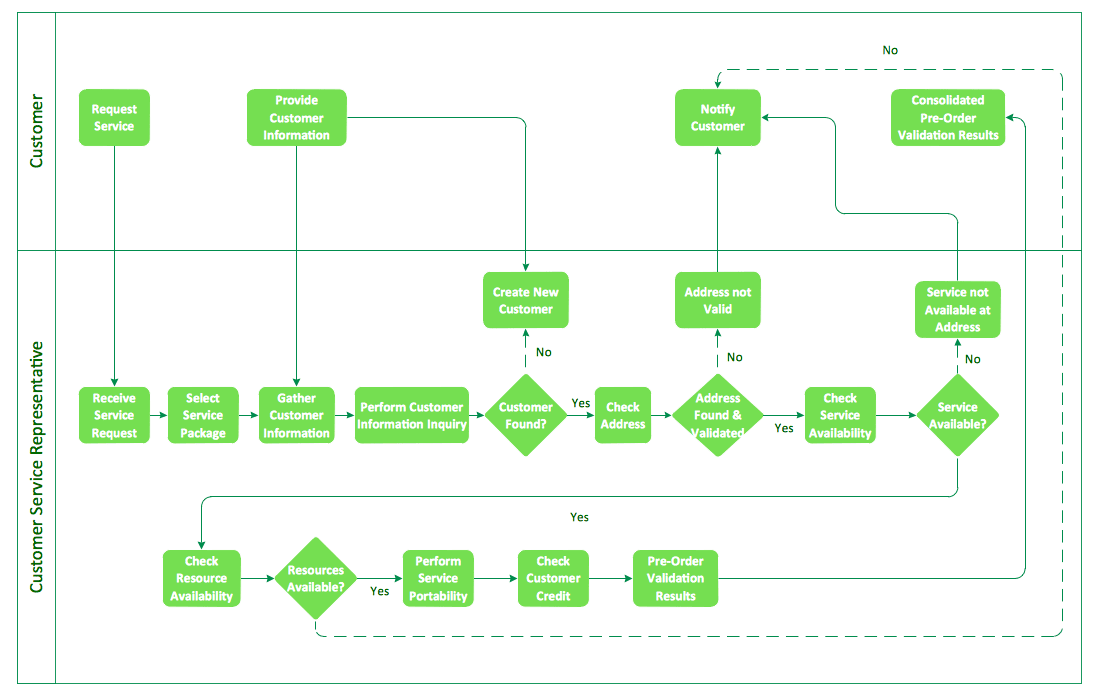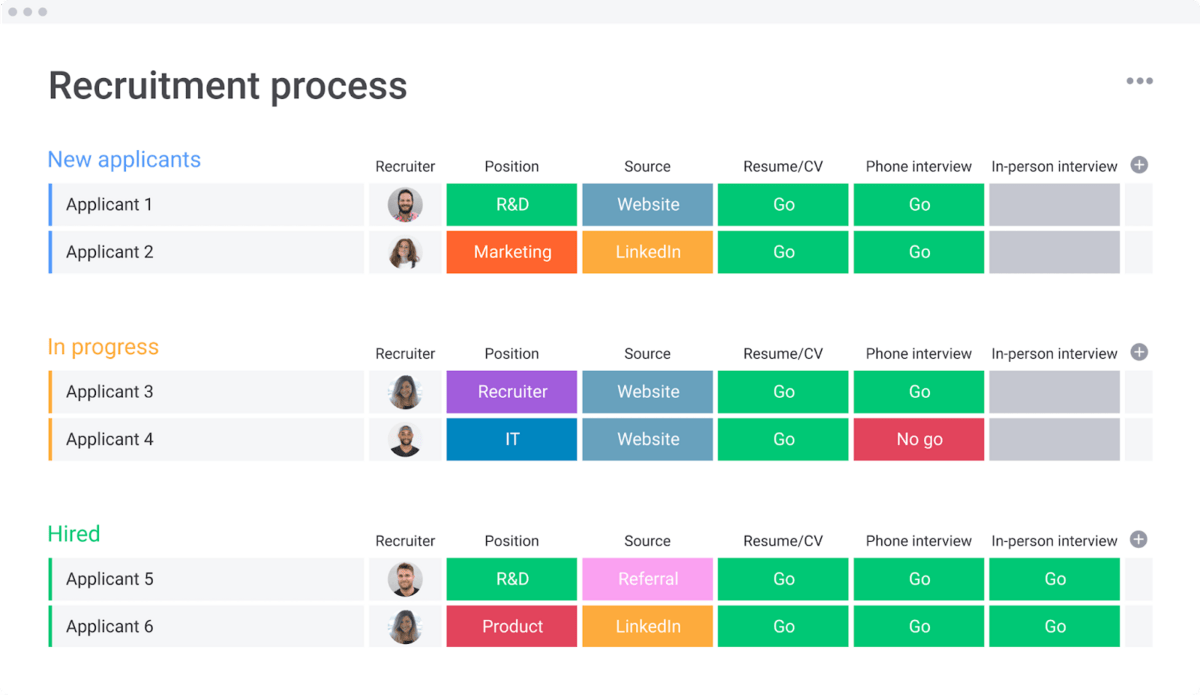Processes are a bit like operating systems.
No matter how good your device is, if you’re using an obsolete OS, you won’t be able to get the most out of that device.
In the same way, if your business is using inefficient processes, you’ll be losing time and resources.
Here’s where business process reengineering (BPR) comes into play.
Today, we’ll show you everything you need to know about BPR, including its definition, key elements, and obstacles.
Let’s start with the basics.
What is business process reengineering?
Business process reengineering is a methodology that consists of redesigning crucial processes in your organization, aiming to find and fill gaps to improve optimization.
Unlike continuous process improvement — which generally promotes small, consistent improvements over time — BPR focuses on completely overhauling inefficient processes.
But, BPR goes hand in hand with continuous process improvement, as it requires a long-term commitment from the organization. Some processes require multiple adjustments before experiencing positive results, and others might need a complete overhaul.
The concept of BPR was first introduced back in the early 1990s by former MIT professor Michael Hammer. He published an article in the Harvard Business Review called “Reengineering Work: Don’t Automate, Obliterate,” saying that:
“Most of the work being done does not add any value for customers, and this work should be removed, not accelerated through automation.”
The idea was that businesses were using technology to automate obsolete processes rather than restructuring the organization from the ground up.
Hammer proposed that organizations should adopt a holistic approach to process recreation instead of putting so much emphasis on scaling processes that weren’t addressing customer needs.
The idea resonated with the entrepreneurial audience and became one of the pillars of modern business administration and organizational structure development.
How does BPR work?
The main objective of BPR is to break down a process into “pieces” and analyze each element from start to finish. Then, restructuring that process from scratch in hopes to optimize results.
To be more precise, the BPR cycle consists of 4 main steps, including:
- Identify process: identify a process that needs to be reengineered based on poor performance.
- Review, update, and analyze “as-is”: analyze the process to find bottlenecks and problem areas.
- Design “to be:” hypothesize and redesign the whole process with new variables and steps.
- Test and implement “to be:” ensure appropriate testing and implementation of the new process through continuous evaluation.

By implementing this cycle in your most crucial processes, you’re able to achieve a drastic improvement in productivity, cycle times, business strategy, costs, quality, among others.
To achieve this goal, you need to consider different principles, including:
- Select the right team: you should designate a specialized team for your BPR efforts, even though all your organization will participate.
- Set clear goals: define specific metrics that will determine whether your new processes are successful.
- Identify the right processes: not all your processes need to be reengineered. You must be strategic about your selection process.
- Understand how BPR may affect people and their roles: BPR requires a radical change, and you need to define how your team will handle them.
- Use the right technology: the success of your reengineering process will be directly dependent on the technology you use.
- Adopt a continuous improvement philosophy: the true results of BPR will often show up in the long run.
We’ll cover these elements in more depth a bit later, but first, let’s answer a major question.
Why do you need business process reengineering in your organization?
As your organization grows, so does its complexity.
The more processes you have, the more difficult it is to stay efficient and keep the level of scale your organization needs to profit.
Business process engineering is crucial because it helps you spot inefficiencies in your processes and fix them through a radical change.
That’s one of the reasons the business process management market was valued at roughly $3 billion dollars in 2020, and it is expected to reach the $4 billion dollar mark by 2026.
Let’s say that you own an online cake delivery business.
Imagine that it currently costs you $30 to produce a cake, plus $5 for shipping and handling.
You’re selling these cakes at $40, which means you’re getting $5 in profit for each cake you sell — probably not enough to keep your business running for long.
So, you decide to implement BPR to figure out a way to make your business profitable.
You analyze each of your processes and discover that you’re using a really expensive packaging that customers don’t really like.
Based on that information, you redesign your packaging process and reduce costs by 30%.
Now it costs you $21 to produce a cake rather than $30, which means you can keep $14 in profit for each sale, not just $5.
In this scenario, BPR could literally save your business.
And this is just a simple example of what BPR can do for you.
Some other benefits of BPR include:
- Increase revenue: improving an existing process may lead to better ways to attract, convert, and delight customers.
- Reduce costs: identify process weaknesses and cost leaks and ideate ways to fix them.
- Get rid of obsolete procedures: identify processes that are no longer relevant for your organization and stop investing resources in them.
- Find automation opportunities: find repetitive steps you can streamline through automation.
- Achieve maximum productivity and efficiency: maximize your outputs while reducing the inputs needed to produce them.
4 critical success factors of business process reengineering platforms
Now that you understand what business process reengineering is and why it matters, let’s discuss some of the key elements you need to consider when selecting a platform to manage your BPR initiatives:
1. Reporting and analytics
Your BPR success depends on deep analysis and evaluation of data. You can’t redesign an existing business process based on a guess, especially if you want to get support from high-level management.
If you’re going to put so much effort into reengineering a process, you better make sure it’s actually worth it.
Fortunately, modern work operating systems can provide you with the level of detail you need to properly implement BPR.
For example, with monday.com’s reporting dashboards, you’re able to visualize the most valuable KPIs of your processes, including:
- Revenue
- Sales
- Customer complaints
- Employee’s performance
- Time
- Project progress
- Task completion
And many more.
For example, if you’re redesigning an HR process, you could track metrics like “employee satisfaction” and “teamwork” and compare past and new performance in the process.

Or, if you’re reengineering a sales process, you could build a dashboard that tracks “sales generated by specific sales reps,” “top performers,” and “top lead sources.”
This way, you’ll be able to implement a business process redesign based on solid data.
Our dashboards are fully customizable, and you can choose from 20+ widgets to track the metrics that are most relevant to the process in question.
2. Process visibility
The best way to understand a process is by representing it visually. This way, you can explore all the steps involved in the process in a single place and identify opportunity gaps much faster.
Here’s where process flow diagrams come in handy.
Process flow diagrams are visual representations of a core business process and all the elements involved, including steps, operations, people, risks, and variations.
These diagrams look something like this:

You should look for a platform that helps you analyze your business processes from start to finish in a simple, visual way.
For instance, with monday.com, everything’s so visual and intuitive that anyone in your team can understand how your processes work, regardless of their tech experience.
Our interface is fully customizable and you can use it to streamline any type of process.
The best part?
We provide you with over 200 premade templates for most of the processes in your organization. From HR to marketing, software development, and even content production, you’ll find a template that fits your needs.

Again, you can customize these templates at will.
You can literally move elements around at will, which makes it really simple to redesign your processes whenever you need.
Some of our most popular templates include:
You can always explore our complete list of templates at our “templates center.”
3. Automations
The whole point of BPR is to use technology to restructure processes and increase efficiency.
That’s why AI is so crucial.
Once you identify a process you can improve, you should find which process steps you can potentially automate. This way, you can repurpose that otherwise wasted time into more crucial initiatives.
McKinsey recently found that 60% of all industries can automate roughly 3 out of 10 tasks.
If you are still not tapping into automation, you’re missing out on a huge opportunity to improve your processes.
For example, if you discover that your team is spending insane amounts of time sending notifications to teammates, you should find a way to automate that task.
Even though notifications are important, it’s not an essential activity.
The good news is that modern project management software can help you automate most of these activities.
With monday.com’s automation center, for example, you can automate over 250,000 human actions, including:
- Status updates: send important notifications and updates to your team automatically and keep everyone informed.
- Tagging: tag specific team members within items whenever an action is completed.
- Item creation: create new tasks and assign them to team members based on conditional data.
- Reporting: streamline and automate your reporting processes.
- Dependencies: set dependencies between tasks and prioritize work.
- Custom: set custom automation recipes to streamline any type of workflow.
You can build these automations in just a couple of clicks, which simplifies the process even for non-devs.

By combining monday.com’s powerful process management features with its advanced automations, reengineering any process becomes feasible for anyone.
4. Collaboration and communication
BPR is a collaborative discipline.
As we covered a bit earlier, you need the right support from your entire organization. Otherwise, you’ll face tons of issues along the way.
That’s why you should look for a platform that helps you centralize your information into a single source of truth. This way, everyone on your team can participate and collaborate with more ease.
A centralized workspace will help you keep your team on the same page, solve problems faster, and redesign full processes with more efficiency.For example, with monday.com, you can bring in your entire team to work under one roof and get access to advanced communication features that make collaboration simpler.
Some of these features include:
- Instant messaging: communicate and brainstorm with your team and add context to each activity in real-time.
- Video conferencing: integrate your favorite video conferencing apps and schedule important meetings faster.
- Team management: assign tasks and responsibilities to teammates and measure progress in one place.
- Permissions: set permission levels to your boards and ensure only the right people can access your information.
Besides, thanks to our Activity Log, you can explore the entire history and conversations you’ve had with specific teammates, clients, and stakeholders.
This helps you understand who made what changes and when, which will give you more control over your team and processes.
Ready to adopt BPR?
The right process, implemented by the right people, at the right time, will help you achieve your highest level of contribution.
The only way to achieve that level of “synchronization” in your processes is through BPR.
By implementing the guidelines provided today, you’ll be able to adopt BPR faster and more effectively.
And if you’re looking for a Work OS that makes BPR adoption easier, then monday.com might be right for you.
To decide for yourself, why don’t you try out our fully customizable business process management template? It’s the best way to start your BPR journey on the right track.

